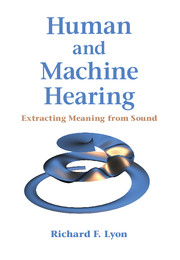Part II - Systems Theory for Hearing
Published online by Cambridge University Press: 28 April 2017
Summary
Part II Dedication: Charlie Molnar
This part is dedicated to the memory of Charles E. Molnar (1935–1996). Charlie is mostly known outside the hearing field for his invention, with Wesley A. Clark, of the LINC—the “laboratory instrument computer”—which was according to many the first personal computer; and for his work in asynchronous and self-timed computer circuits, which is what he was working on when he died in 1996. He was a super generous guy, always willing to discuss and advise, and our talks about hearing and circuit design were very important to me. His “system of nonlinear differential equations modeling basilar-membrane motion” (Kim, Molnar, and Pfeiffer, 1973) was probably the first example of a great way to integrate nonlinearity into a filter-cascade model of the cochlea.
In this part, we develop the mathematical and engineering basics needed to model the ear.
We start with a review of linear systems theory, the body of knowledge that allows the design and construction of efficient and flexible filters. Even for readers very familiar with linear systems theory, a reading of this chapter should be a useful refresher and an introduction to our terminology and approach.
After a chapter on the discrete-time version of linear system theory, we apply the theory to resonant filters and elaborated resonant filters such as the gammatone family. Then we extend into nonlinear systems, with a whole chapter on automatic gain control.
Finally we discuss wave propagation in distributed systems, and how we model it with linear systems of the sort that will lead to good machine models.
- Type
- Chapter
- Information
- Human and Machine HearingExtracting Meaning from Sound, pp. 95 - 96Publisher: Cambridge University PressPrint publication year: 2017
- 1
- Cited by

